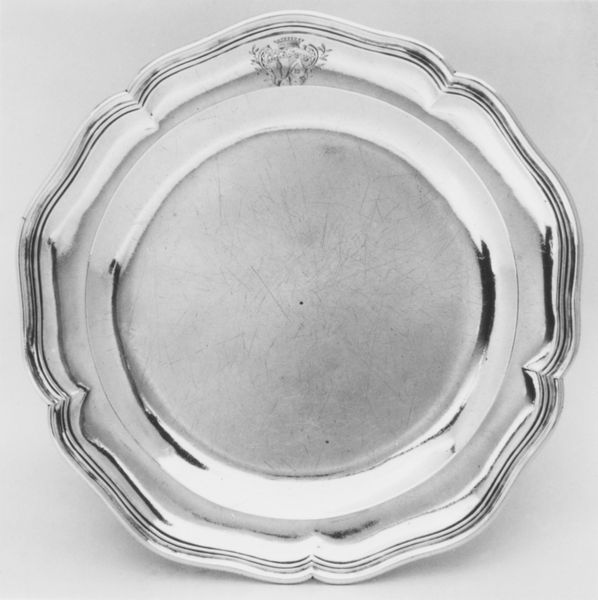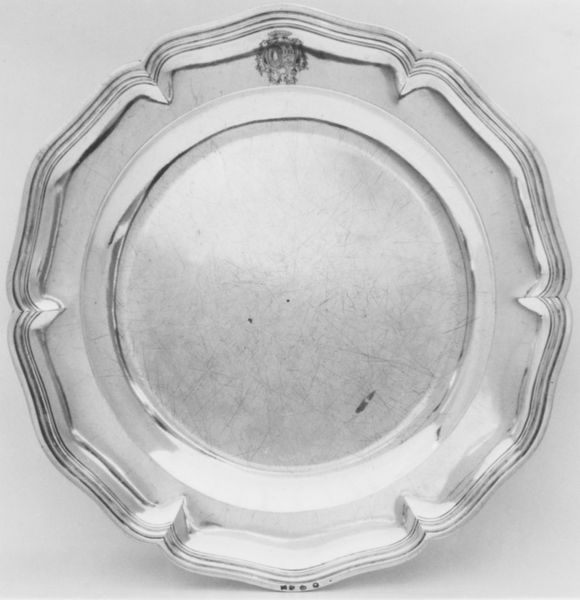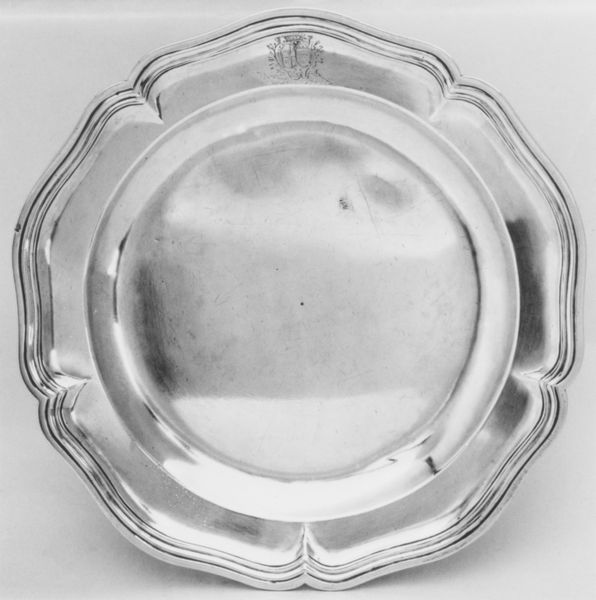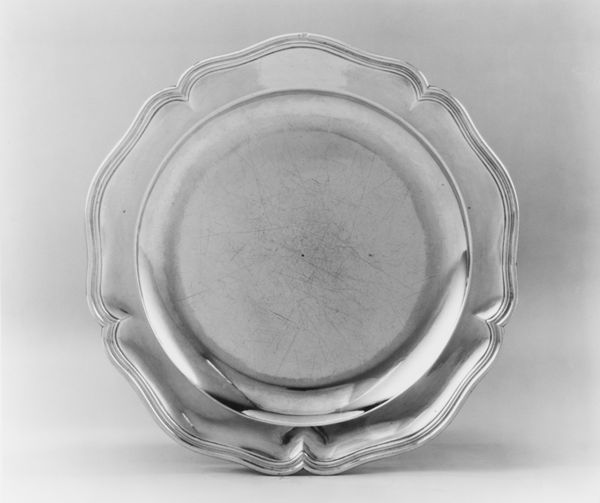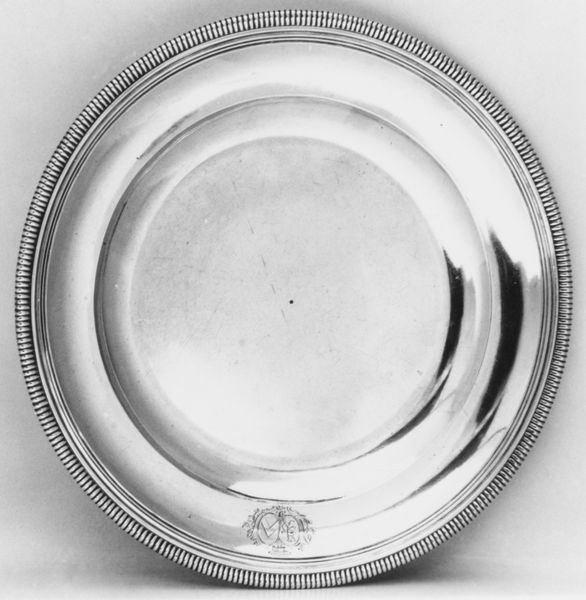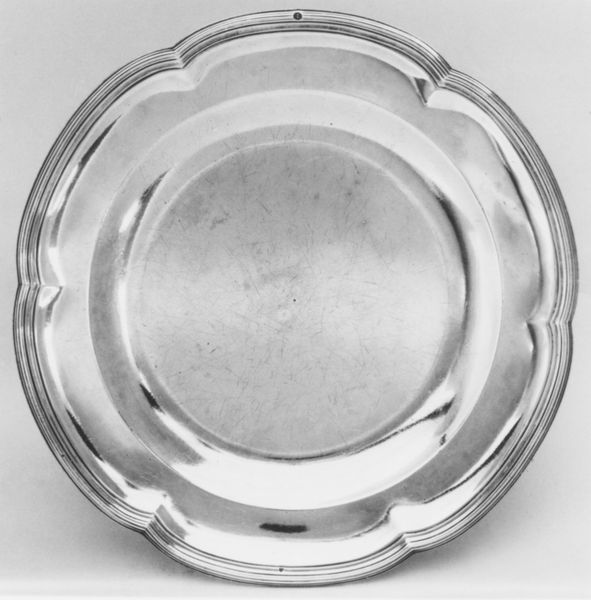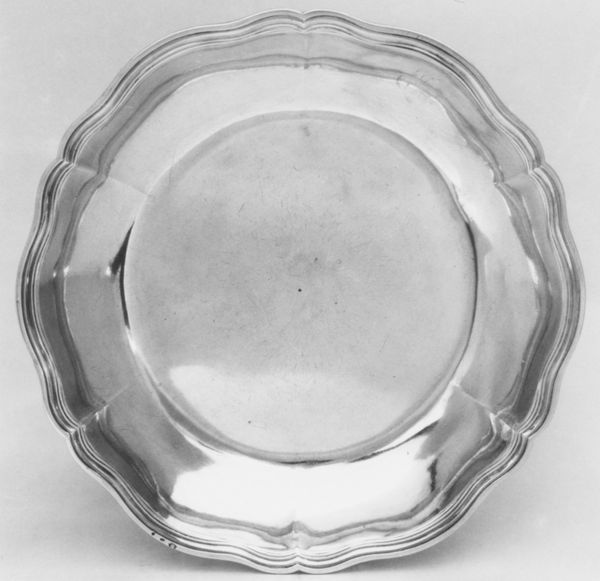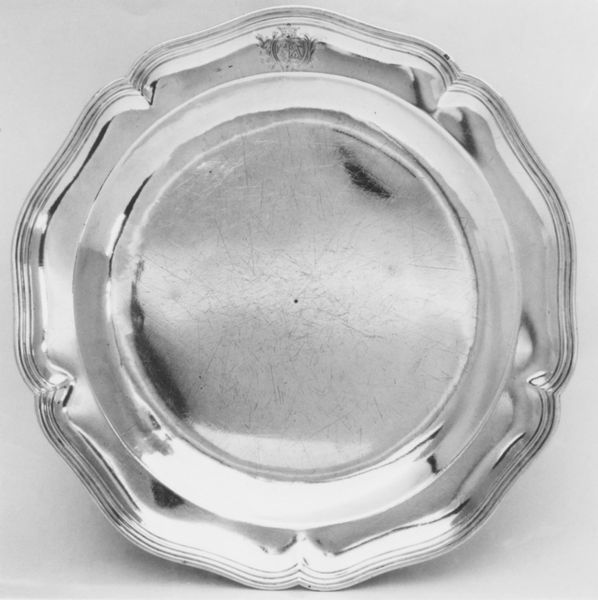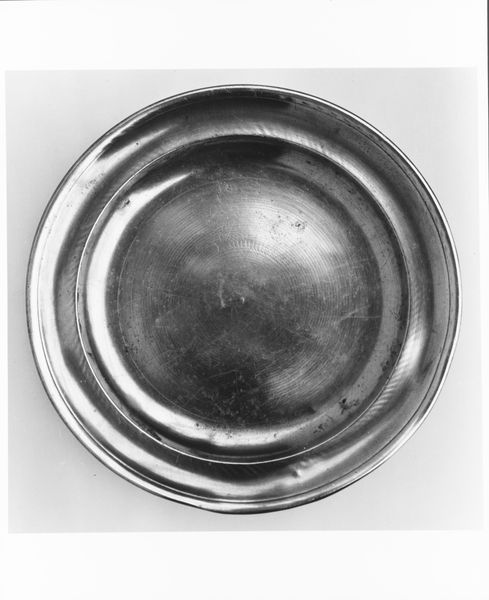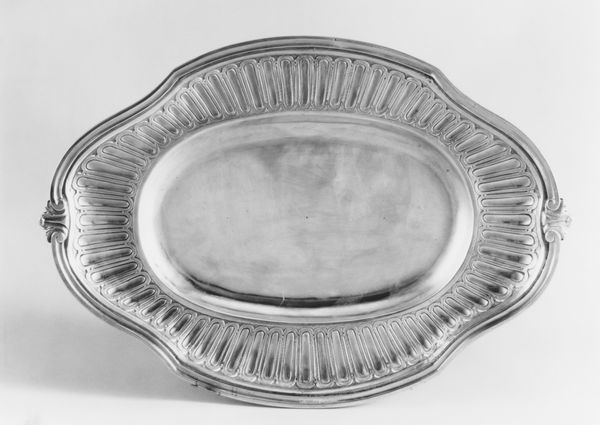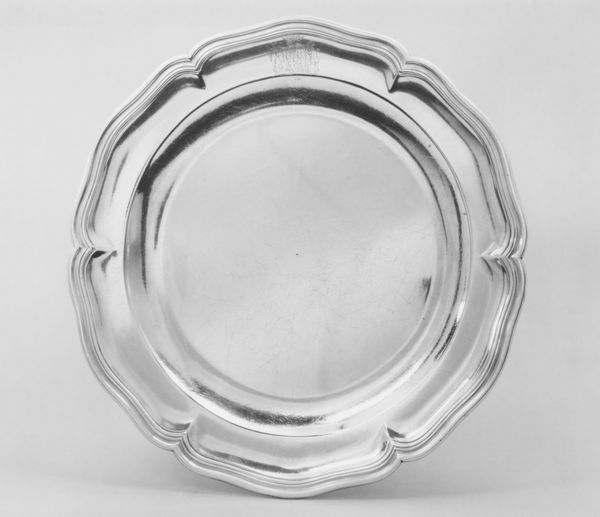
Dimensions: Overall: 1 × 11 1/8 in. (2.5 × 28.3 cm)
Copyright: Public Domain
Curator: This is a silver plate crafted by Jean Chaslon in 1777. It's currently held here at the Metropolitan Museum of Art. Part of a pair, its design beautifully exemplifies the Rococo style. Editor: It's pristine, almost clinical in its simplicity. There’s an austerity in the polished surface, broken only by those gentle curves of the rim and the faint family crest. A very constrained exuberance, I would say. Curator: The Rococo period, after all, even when embodied in something like a plate, represented a shift away from strict Baroque conventions. This plate, and others like it, served as a backdrop for aristocratic displays of wealth and social status during a period defined by evolving political ideals. Editor: Yes, the subtle fluting and the almost-absent ornamentation of the crest – it all speaks to power, but one subtly aware, perhaps, of the social pressures building at the time. Eating from it must have been a performative act of distinction, with revolutionary anxieties hovering at the edges of every banquet. Who were these dinners really for? Curator: Precisely. The choice of silver as the medium itself speaks volumes about access to resources and power. By examining objects like this, we can consider material culture as a lens for interrogating class dynamics in pre-revolutionary society. This wasn’t just decorative art. This was political communication. Editor: Looking at the piece today, one sees traces of vanished lives etched onto its surface - faint scratches whispering of feasts, anxious whispers and loaded glances across tables. And the silver itself, despite its cool formality, bears witness, holding all of that history within its sheen. It also allows for speculation about the labour involved, reflecting a story that rarely puts forward the perspectives of workers and producers. Curator: Yes. And how tastes circulated across classes. Decorative art like this does not exist in a bubble. Examining its consumption alongside its creation lets us analyze societal values across the economic spectrum. Editor: So, not merely an exquisite antique, but a potent material object loaded with the cultural anxieties and political tremors of its age. Makes you look at a dinner plate differently, doesn't it? Curator: Absolutely. By appreciating the nuanced ways that everyday objects interacted with prevailing political winds, we achieve a better, more granular view of the past.
Comments
No comments
Be the first to comment and join the conversation on the ultimate creative platform.
